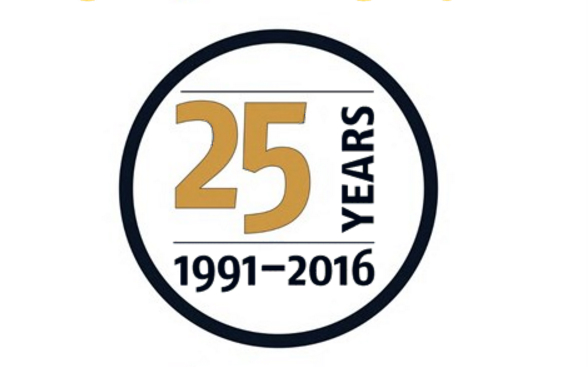
A quarter of a century ago, as the ‘recession we had to have’ was wreaking havoc, Don Elliott launched a brassy new media for the print industry – ProPrint magazine.
Back in 1991 there was no email, no internet, no smartphones, no CTP, no digital printing and no private equity takeovers. Execs everywhere were depressed as the era of the long boozy business lunch had finished. Drupa 1990 had just taken place, with the big theme of on-press automation. The industry was at the beginning of what would become a digital transformation, the $5000 Apple Mac was killing the big million dollar electronic page make up systems from Crosfield, Hell, Scitex and Screen, and two years later the launch of Indigo and Xeikon would herald the start of a new era in print production.
Don Elliott, Cliff Ewing and Noel Boltwood owned Agency Printing in Sydney, and always being straight talkers decided the industry needed ‘a magazine with balls’, so created ProPrint, with a focus on the personalities of print and a desire to tell it like it is.
That first issue ran to 64pp plus covers, and had features on the PKIU Printing and Kindred Industries Union, on printer Frank Steel & Co, on SA government printer State Print, and intriguingly a piece on the new Mazda 929, a snip at $55,000 for the basic model.
ProPrint published in full colour from day one, forcing established print trade magazines to follow suit. Don Elliot and his team, including current national advertising manager Carmen Ciappara, took the magazine to the PIAA conference at Port Stephens to launch the title.
Since then ProPrint has remained true to its mission to tell it like it is, with the result that the magazine has grown continuously and is now at the core of the Australian print industry. It now publishes monthly, and has the essential ProPrint daily news website as part of its portfolio.
Elliot sold the magazine to UK publisher Haymarket in 2007, who then sold to the current owner Shankar Vishwaneth in 2013, where it forms part of the multi-title Printer Magazines Group. There have been just four editors in that 25 years; Dee Waring, Steve Crowe, Steve Kiernan and current incumbent Wayne Robinson.
ProPrint continues to believe in telling it like it is, and publishes without fear or favour, representing the interests of its core constituency, the owners and managers of the nation’s print businesses.
The print industry has been through enormous change since 1991, but throughout that time ProPrint has remained committed to print, to the people in it, and to the stories. We thankyou for your support, and look forward to sharing the next 25 years with you.
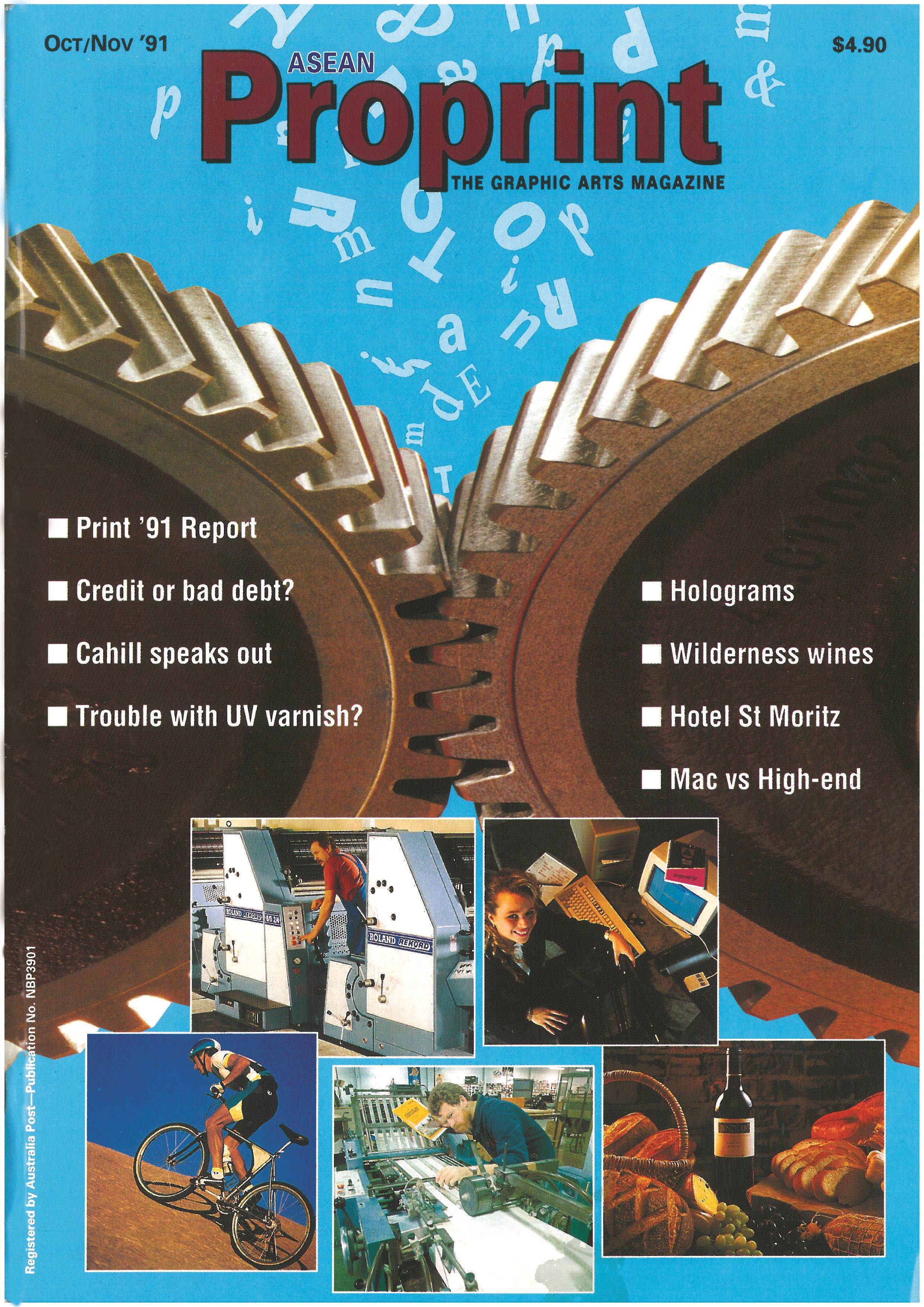
It was in 1991 when:
Bob Hawke sends Aussie troops to war against Iraq
Tens of thousands march in protest
Perjury trial of Sir Joh Bjelke-Petersen ends in a hung jury
Sir Joh’s Qld Police Commissioner Terry Lewis sentenced to 14 years for corruption
First general strike in 65 years takes place in NSW
Bulk carrier MV Mineral Diamond disappears off the coast of WA
Wade Frankum fatally shoots seven shoppers in Strathfield Plaza
Paul Keating makes first unsuccessful challenge against Bob Hawke
South Africa dismantles apartheid
Body of printer, publisher and pension thief Robert Maxwell found floating in sea
Queen singer Freddie Mercury dies of Aids
Nirvana release Nevermind and start the grunge movement
Australia beat England 3-0 to retain the Ashes (again)
Agency Printing boss Don Elliot launches ProPrint
Continuous growth at ProPrint
Apart from a brief spell when ProPrint was under the ownership of global publishing giant Haymarket it has always been an Australian owned magazine, whose owners have a print industry heritage.
Founding publisher Don Elliot was also the owner of Agency Printing, when he started the magazine. Agency Printing was a leading Sydney print business, one of the first into long perfectors and CTP. Current owner Shankar Vishwanath is a former franchisee of two Kwik Kopy printshops which he successfully built and then sold.
Elliot still takes an active interest in ProPrint, which has remained true to his original mission of being ‘a publication with balls’. From its initial bi-monthly issues ProPrint became a monthly magazine in 2001, and then launched the successful proprint.com.au website in 2007.
Elliot says, “I am so pleased that ProPrint is under such good stewardship today, and is continuing to deliver essential valuable news and information to the printers of Australia.”
Vishwanath says, “ProPrint was created on solid foundations with a clear vision. It is a privilege to be the current custodian, and to build on Don Elliot’s great work.”
25 years, four editors and one Carmen
Since ProPrint launched a quarter of a century ago there have been just four editors, and one person who has been with the title since the start.
Founding editor was Dee Waring, who drove the magazine for the first two years before going off to pursue other interests, Dee is currently running an arts centre in New Zealand. Taking over from Dee was Steve Crowe, the longest serving editor and still a regular contributor. Steve headed the editorial team from 1993-2007, and these days, apart from writing, is enjoying playing blues on his treasured guitar. When Haymarket bought ProPrint it installed Steve Kiernan – who came from UK title Printweek – in the hot seat, he managed the magazine for five years and led its online launch, before joining leading tech title CRN. When ProPrint was bought by Printer Magazines Group its Group Editor Wayne Robinson took charge of the new title, and today remains behind the editorial wheel. He says, “Just four editors in 25 years is testimony to the quality of ProPrint, in an era characterised by the revolving door. Printers in Australia are the beneficiaries of those that were here before me, and I continue to endeavour to improve ProPrint month by month.”
Throughout ProPrint’s history one person, Carmen Ciappara, has been working with the magazine, starting in accounts and for the past 15 years as national advertising manager. Known throughout the industry Carmen says, “The print industry has changed so much, although there are plenty of characters still here from those days. It is a pleasure to work with everyone and I look forward to the next 25 years.”
25 years of unrivalled print news
November 1991
Lead news in the first ever issue of ProPrint was that a consortium of 21 prepress companies had been formed under the auspices of GASAA (since incorporated into the PIAA) to sell repro to the USA under the tagline ‘while you’re sleeping we’re working’. Repro house Sinnott Brothers bought a pair of Crosfield Studio 9500 Magnascan scanners, which it planned to integrate with desktop publishing systems. West Australian Newspapers was formed to buy the assets of Alan Bond owned Bell Publishing – which along with most of the rest of his empire had collapsed – which included the West Australian newspaper. Industry association Patefa released stats showing that first year stage one apprenticeships had dropped alarmingly, by 41 per cent on the year before.
November 96
News 20 years ago was led by Penfolds announcing a pre-tax profit of $2.45m for the year ended June 1996, an increase of 14 per cent over the previous year. Chairman Will Penfold reported sales up by 11 per cent. Paper merchant Edwards Dunlop (later bought by BJ Ball) launched its first website. Kwik Kopy opened its 100th store. HP gave added incentives to dealers selling its Designjet, which was launched at the same time as ProPrint in 1991, and like ProPrint is still going strong. Half the seminars at the Seybold conference were focused on the new fangled internet, with Netscape the star of the show. It had more than 90 per cent of the browser market, but a decade later would have less than one per cent, losing out to Internet Explorer. Netscape was eventually bought by AOL, its technology lives on today as Mozilla Firefox.
November 2001
The local print industry was at war with Adobe over font licensing. Adobe wanted printers to buy a license for each font they were presented with by designers, so called transient fonts, leaving the industry mightily aggrieved. The economic climate of 2001 presented a sales challenge to printers, and some took major hits as clients such as HIH, OneTel and Ansett all went broke, however it was not stopping their capex with spend on new equipment on the rise. D&D Printing in Melbourne became possibly the first Aussie printer to use the term cross-media. On the supply side Currie Group won the agency for Indigo, which benny landa had just sold to HP for US$830m, and press giant KBA said it would set up its own company here following the failure of Edward Kellar to install any presses in five years.
November 2006
Pacific Print Group was on the march, the Gresham p/e vehicle buying Mark Mina’s AP Mail as the latest part of its grand plan to change the face of print, and make itself a few bob along the way. Evolving into Geon, the company eventually crumbled, with Mina doing an Alan Bond and buying the company back for a fraction of what he sold it for, and he wasn’t the only one. Finsbury Green swept the deck at the SA/NT PICAs for the second year in a row picking up 21 medals including seven golds. Also for the second year in a row P&I was voted best carton packaging suppler in Australia. The PIAA was in a battle with the Victorian state government to stop it sourcing print from outside the state.
November 2011
Focus Press picked up the business assets and 20 former workers from failed printer Superfine. The purchase saw a planned auction of Superfine kit scrapped, with David Fuller’s company taking the ten-colour Heidelberg. Focus itself would spectacularly implode three years later, three weeks after opening a brand new security printing plant in Wollongong, which was largely funded by a $6m government grant. Trade printer CMYKhub reached $200,000 print sales a month from Queensland just four months after starting a factory there. Print broker Ergo Asia won the $50m Coles print contract, one of the biggest in the country. Immij bought horticultural products printer and said it was aiming for a 10-20 per cent growth injection. IPMG posted a 21 per cent rise in profits, but said it was not good enough, coming off the back of ‘anaemic’ market conditions.
Father and son duo 25 years on
Refurbished printing equipment reseller JW Graphic Engineering has maintained a loyal relationship with ProPrint for the past 25 years, advertising in every single print magazine issue since ProPrint’s inception in 1991.
Run by father and son duo Barry Williams senior and junior, the boys at JW Graphic have watched the cogs turning in the print industry machine for 27 years after first buying the business in 1989.
Barry Williams senior says his business began with its first client Kenthurst Printing, and has transformed over the last quarter century alongside the market.
The Williams men service, repair and refurbish second hand machines both post-press and offset, and says the traditional offset press remain the most trustworthy tool at a printer’s disposal.
“We refurbish second-hand machines that have been in operation for years, so we have learnt what brands and what models can be trusted,” says Barry Williams senior, founder of JW Graphic Engineering.
“I have worked with Heidelberg and Polar machines for the best part of the last 25 years, and we continue to sell and repair those presses.”
ProPrint has been part of the business since the magazine was launched in 1991, just two years after JW Graphic. Williams says, “We liked ProPrint from the start. Advertising our business there has always worked, it has given us a profile and put our business in front of printers. The consistency has bene great for us.”
JW Graphic also resells presses from Stahl and Horizon, and offers a suite of cutting and bindery machines from its location in Mount Druitt, Sydney.
Branching out from simply repairing, refurbishing and slogging presses, the father-son team also perform services including machinery relocation and installation, truck and crane hire, packing of containers, workshop facilities and the sales, service and installation of Varn Kompac.
Barry Williams and his son are the only staff employed at JW Graphics, and they agree while working with family can often prove difficult, it however ultimately ensures a smooth operation in a busy print industry.
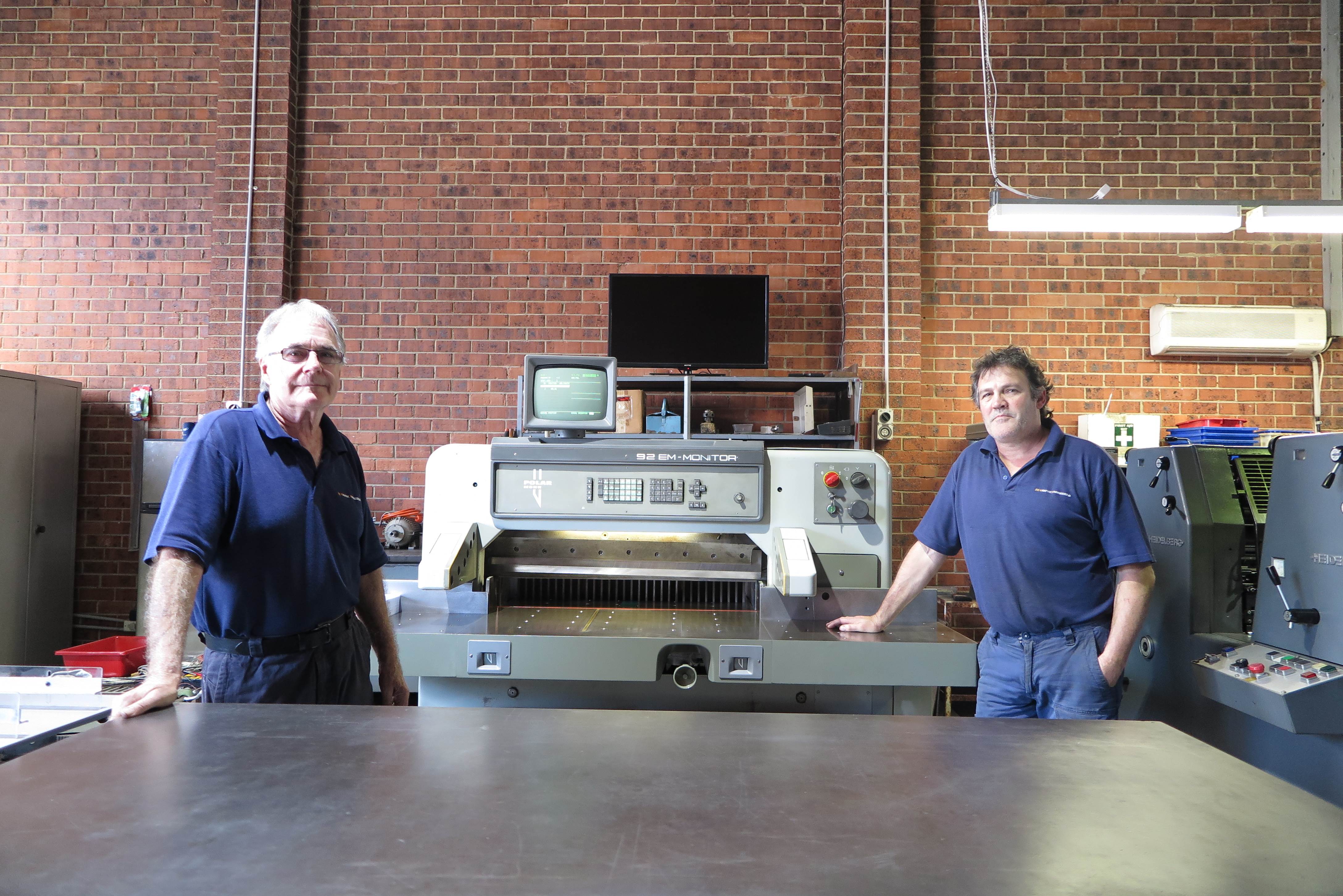
A quarter century of Seaga support
Seaga will celebrate its 30th year in the consumables business in 2017, and this year it stands beside ProPrint to celebrate 25 years of marketing, as the company has been in every issue since the start.
ProPrint spoke with owner and CEO Tony Foley, who says Seaga’s survival in a tough print industry is a testament to its strong relationships with clients and suppliers, some of which have also been continuous over the life of the business.
“Our partners such as Kodak, Pantone and CITO have generated a great platform for our business to create a powerful customer base over the past thirty years,” says Foley.
“I’ve been with the business the whole time and the industry has changed enormously. Here at Seaga we have changed and adapted, and the biggest transformations from our perspective have been the digital drive, automation and minimised labour.”
Foley says the key to success is long term relationships with big customers. The group is the number one distributer for a number of its key suppliers. He also adds that partnering with a strong brand such as ProPrint has ensured its name stayed relevant and familiar in a turbulent industry.
“In any industry, to be around for a period as long as 25 years is quite an achievement and it is proof of how strong both the Seaga and ProPrint brand is,” says Foley.
“Since our inception we have adapted to the industry’s needs and have also diversified from a small product range to sourcing almost every product that our clients could ever require.”
Seaga is also a proudly Australian-owned and family-run business, employing 15 people across its operations in NSW, South Australia and Queensland.
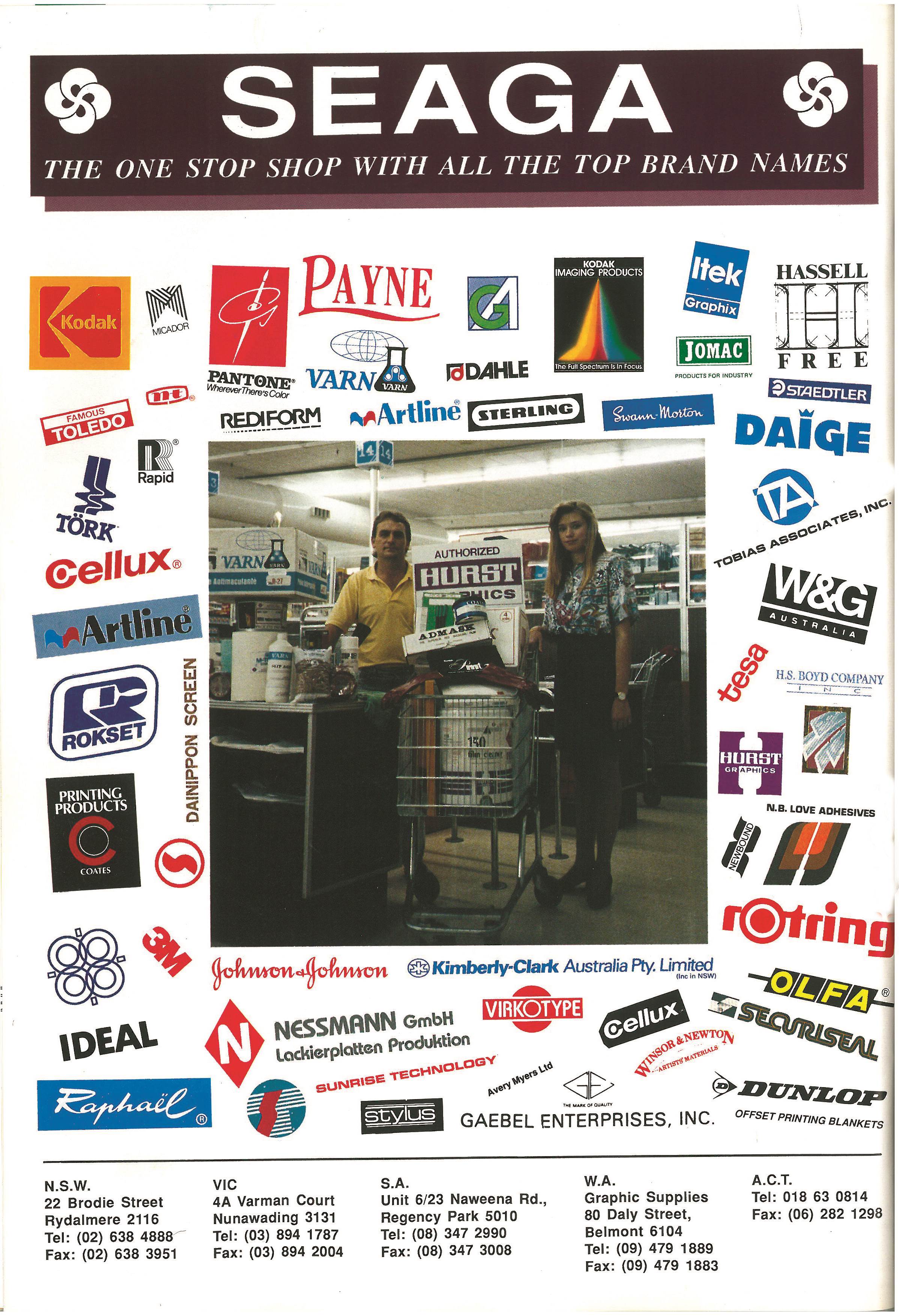
HP DesignJet also celebrating 25 years
In the very same year 1991 that ProPrint was launched global print solutions supplier HP launched its wide format series printer HP DesignJet.
Since then the DesignJet, just like ProPrint, has become an integral and continuous part of the graphic communications landscape. It has gone onto to become the world’s most successful wide format printer, this year marking three million printers installed across the globe.
In 1991 the first inkjet HP DesignJet – the Inkjet-TIJ 2.0 press – was a monochrome A0 printer with 300dpi, able to print an A1/D-sized print in draft mode in around four minutes – a ground-breaking speed for its time. Two years later, HP unveiled its 650 Inkjet colour and the following year its DesignJet 200 with roll feed and autoloader.
Since DesignJet’s inception, a dozen series upgrades have reached the market. In July this year a quarter of a century after its launch HP launched its fresh range of DesignJet printers for the graphics market, the HP DesignJet Z2600 PostScript printer which can be used to print with speeds up to 469 ft per hour, and the HP DesignJet Z5600 PostScript, with speeds up to 650 ft per hour. The DesignJet family now comprises a suite of presses suitable for the office, high impact graphic, production and professional photo markets with 26 different DesignJet printers available.
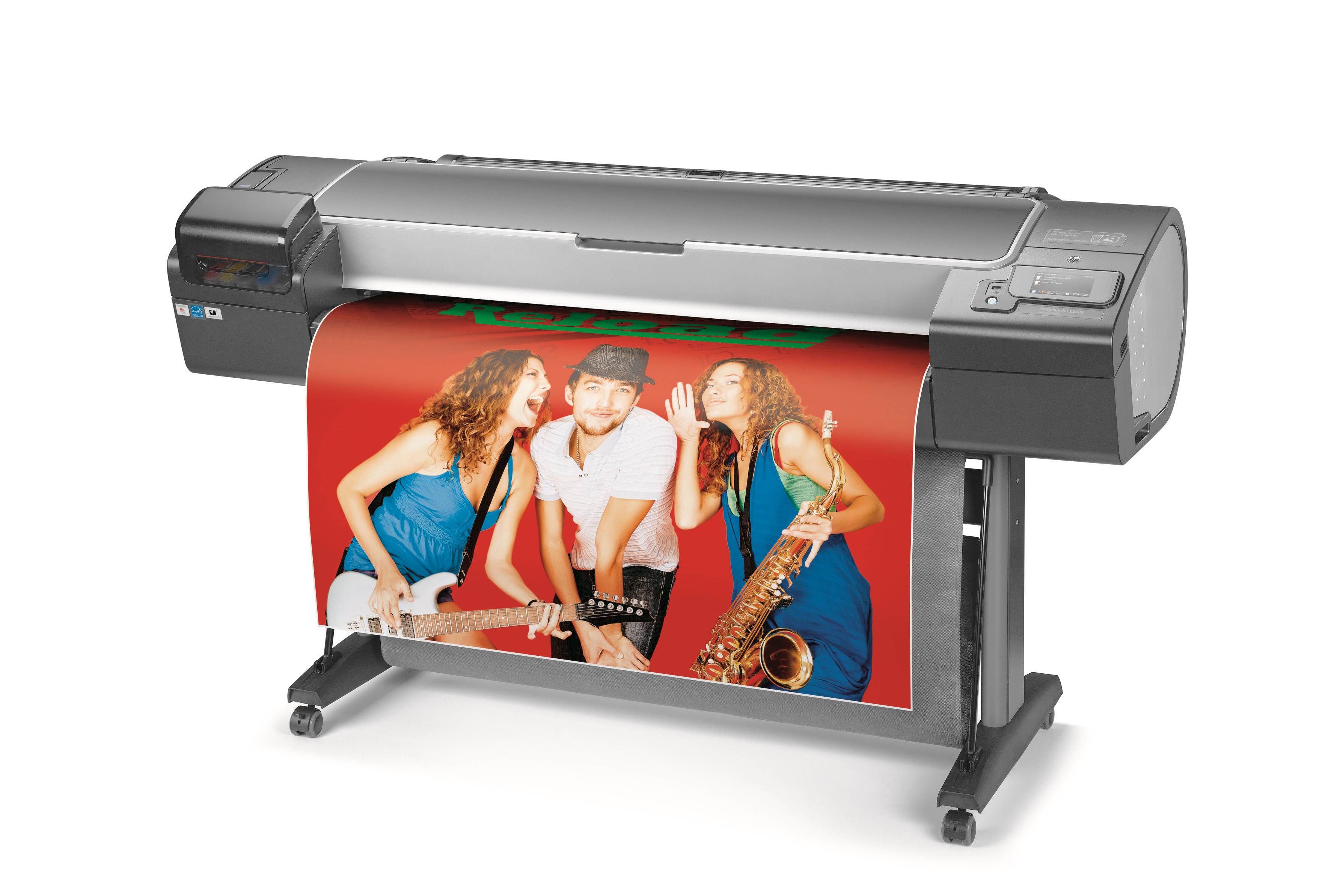
HP DesignJet Z2600
Comment below to have your say on this story.
If you have a news story or tip-off, get in touch at editorial@sprinter.com.au.
Sign up to the Sprinter newsletter
